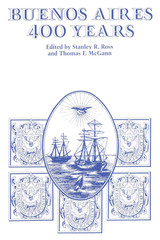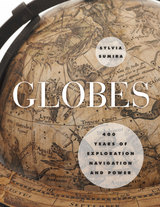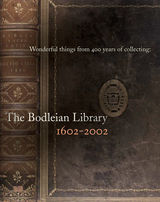4 books about 400 Years

Asians in Britain
400 Years of History
Rozina Visram
Pluto Press, 2002

Buenos Aires
400 Years
Edited by Stanley R. Ross and Thomas F. McGann
University of Texas Press, 1982
Buenos Aires has been called the Paris of Latin America, and the comparison is just, for in style of life and city design Buenos Aires resembles not only the City of Light but also the other great world capitals—London, Rome, New York. Buenos Aires: 400 Years attests to the long, diverse, and fascinating life of this urban mass of some six hundred square miles and eleven million inhabitants, which began as a tiny palisaded outpost on the remote fringe of the Spanish Empire. That colonial past is skillfully described here, but so too is the future of Buenos Aires. Each essay reveals much about the sociological and economic life of the city and the dynamic history of its people. This informative volume derives from a conference held at the Library of Congress in September 1980, which was dedicated to the 400th anniversary of the founding of Buenos Aires. The conference was jointly sponsored by the University of Texas at Austin and the Municipality of Buenos Aires.
[more]

Globes
400 Years of Exploration, Navigation, and Power
Sylvia Sumira
University of Chicago Press, 2014
The concept of the earth as a sphere has been around for centuries, emerging around the time of Pythagoras in the sixth century BC, and eventually becoming dominant as other thinkers of the ancient world, including Plato and Aristotle, accepted the idea. The first record of an actual globe being made is found in verse, written by the poet Aratus of Soli, who describes a celestial sphere of the stars by Greek astronomer Eudoxus of Cnidus (ca. 408–355 BC). The oldest surviving globe—a celestial globe held up by Atlas’s shoulders—dates back to 150 AD, but in the West, globes were not made again for about a thousand years. It was not until the fifteenth century that terrestrial globes gained importance, culminating when German geographer Martin Behaim created what is thought to be the oldest surviving terrestrial globe. In Globes: 400 Years of Exploration, Navigation, and Power, Sylvia Sumira, beginning with Behaim’s globe, offers a authoritative and striking illustrated history of the subsequent four hundred years of globe making.
Showcasing the impressive collection of globes held by the British Library, Sumira traces the inception and progression of globes during the period in which they were most widely used—from the late fifteenth century to the late nineteenth century—shedding light on their purpose, function, influence, and manufacture, as well as the cartographers, printers, and instrument makers who created them. She takes readers on a chronological journey around the world to examine a wide variety of globes, from those of the Renaissance that demonstrated a renewed interest in classical thinkers; to those of James Wilson, the first successful commercial globe maker in America; to those mass-produced in Boston and New York beginning in the 1800s. Along the way, Sumira not only details the historical significance of each globe, but also pays special attention to their materials and methods of manufacture and how these evolved over the centuries.
A stunning and accessible guide to one of the great tools of human exploration, Globes will appeal to historians, collectors, and anyone who has ever examined this classroom accessory and wondered when, why, and how they came to be made.
Showcasing the impressive collection of globes held by the British Library, Sumira traces the inception and progression of globes during the period in which they were most widely used—from the late fifteenth century to the late nineteenth century—shedding light on their purpose, function, influence, and manufacture, as well as the cartographers, printers, and instrument makers who created them. She takes readers on a chronological journey around the world to examine a wide variety of globes, from those of the Renaissance that demonstrated a renewed interest in classical thinkers; to those of James Wilson, the first successful commercial globe maker in America; to those mass-produced in Boston and New York beginning in the 1800s. Along the way, Sumira not only details the historical significance of each globe, but also pays special attention to their materials and methods of manufacture and how these evolved over the centuries.
A stunning and accessible guide to one of the great tools of human exploration, Globes will appeal to historians, collectors, and anyone who has ever examined this classroom accessory and wondered when, why, and how they came to be made.
[more]

Wonderful Things from 400 Years of Collecting
The Bodleian Library 1602-2002
Edited by the Bodleian Library
Bodleian Library Publishing, 2002
A timeless selection of Wonderful Things, this book highlights the tremendous range of the Bodleian Library's collections. From the sixth-century Laudian Acts—a manuscript probably used by Bede himself—to modern treasures such as one of Tolkein's own illustrations for TheHobbit, the objects chosen show the extent, variety, and quality of the Library's holdings and how they came to the Bodleian. Each work is sumptuously displayed in full-page color with facing-page descriptions. Collectively, they offer a fascinating glimpse into the principles, history, and future of collecting by a world-class institution.
[more]
READERS
Browse our collection.
PUBLISHERS
See BiblioVault's publisher services.
STUDENT SERVICES
Files for college accessibility offices.
UChicago Accessibility Resources
home | accessibility | search | about | contact us
BiblioVault ® 2001 - 2024
The University of Chicago Press









